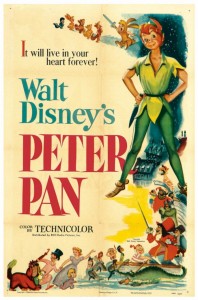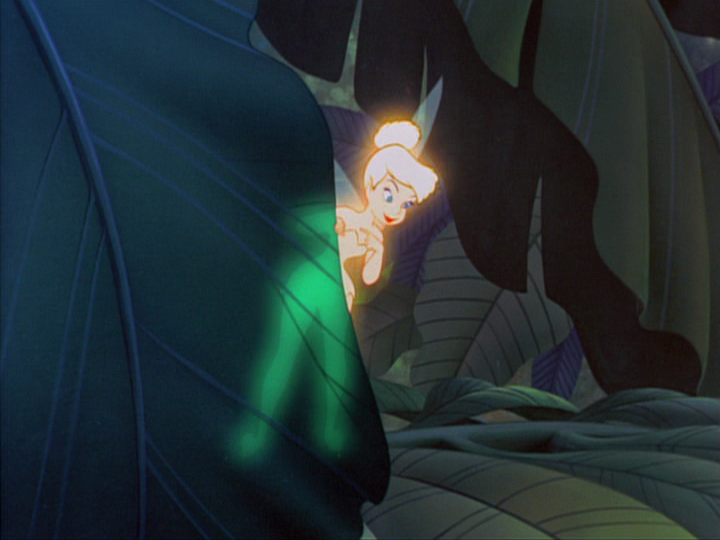Peter Pan (1953)
“That corner house over there is the home of the Darling family — and Peter Pan chose this particular house because there were people here who believed in him.”
|
Synopsis: |
|
Genres, Themes, Actors, and Directors:
Review: Other characters, meanwhile, are simply disappointing and/or ill-conceived: as Richard Scheib of Moria Reviews puts it, “the Lost Boys look… like anthropomorphized fluffy bunnies and Smee [Hook’s right-hand-man] looks like he has strayed in from a casting call for one of the Seven Dwarves.” Meanwhile, Hook (wonderfully voiced by Hans Conried) is too buffoonish to represent a real threat; his interactions with both Peter and “The Crocodile” rely far too heavily on tiresome slapstick. The most intriguing character in the film by a long shot is Tinkerbell, who never says a word, but says PLENTY with her expressions, body language, and actions. Other than Tinkerbell, the most interesting aspect of this film for me (as a mom of two little kids) was the fact that young Michael Darling wears pink the entire time. This prompted me to do a bit of research, and I came upon this short article, which states: “Pink and blue arrived, along with other pastels, as colors for babies in the mid-19th century, yet the two colors were not promoted as gender signifiers until just before World War I—and even then, it took time for popular culture to sort things out.” Since the original Peter Pan was written (and takes place) near the turn of the century, this choice makes sense. Redeeming Qualities and Moments: Must See? Links: |




One thought on “Peter Pan (1953)”
First viewing. A once-must, for budding ffs to experience along with ff elders.
This occasionally happens because I have simply been seeing too many movies over too long a period of time (i.e., since childhood): I will come across a title (esp. a well-known title) and am pretty sure that I have already seen the film when, in fact, I probably haven’t. In the case of ‘Peter Pan’…when I was a kid, classic Disney films were shown on tv all the time. Granted, we didn’t have a color television set, but we still watched them.
But while watching ‘Peter Pan’ last night, I realized I’d never seen it. Nothing about it sprang to mind as familiar – although I do, of course, know the story and, at some point, did see a production of the stage version.
From reading the assessment given, I was expecting something disorganized or lacking focus. But I don’t find that to be the case. I think it’s definitely Wendy’s story – as she is the one about to leave childhood behind her, and it is her last chance to have a child-like experience. The experience she embarks on comes down to a simple adventure yarn, so I don’t have a problem with its specifics really. It’s just a realized form of the kind of thing kids might act out with each other in their imaginations.
I agree that character development is minimal across-the-board. I don’t think the film has a particularly lofty aim. As entertainment, I would agree that it’s one of the lesser Disney classics. (I’m not as enamored of Tinkerbell as many seem to be – which is also a development issue – and there’s more of the ‘darker side’ of
being female – i.e., jealousy, competition, etc. – than I’d expect in a children’s story.)
However, the calling card is the film’s design and execution, which should probably get high marks. It’s quite a lovely-looking film, often with rich detail, and there’s enough energy in the direction that the story moves along swiftly enough. So, as a film experience overall, it seems to merit a viewing by those destined to be film fanatics.